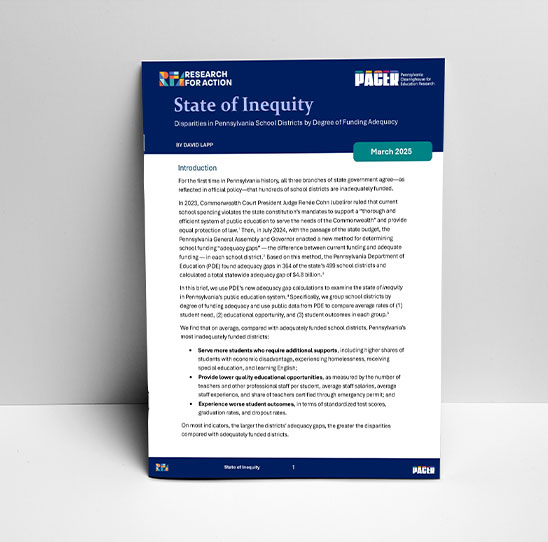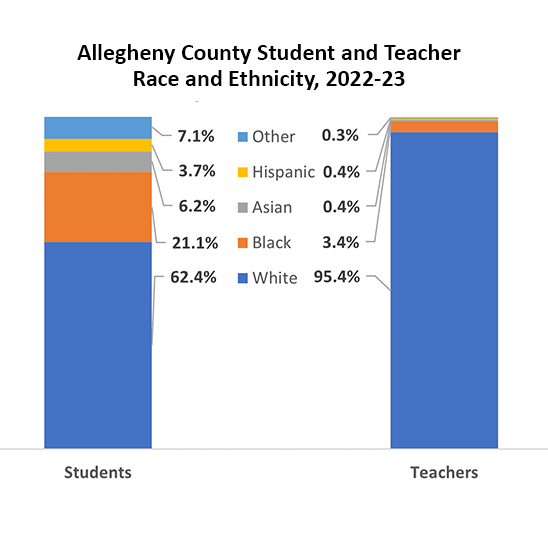Teacher mobility, or teacher turnover, has long garnered attention as a critical educational equity gap. This attention is warranted as, within schools, teachers have the single greatest impact on student achievement. The unprecedented interruptions to school-based learning and the trials of navigating remote and hybrid instruction due to the COVID-19 pandemic heightened concerns about the stability of the teacher workforce and the potential of a pending teacher shortage across the U.S., state of Pennsylvania, and locally in Allegheny County.
This study, from RFA’s Allegheny County Education Research (ACER) project, takes a closer look at teacher mobility in the region by examining six years of data leading up to the pandemic. Specifically, this study:
- Identifies teacher mobility trends in Allegheny County public schools from 2014-15 to 2019-20,
- Describes the destinations of mobile teachers, and
- Identifies key characteristics of mobile teachers and the schools they exited and entered within the county to determine if potential equity gaps exist.
Most of the analysis conducted for this study used data available in public personnel records and school characteristics data from the Pennsylvania Department of Education (PDE). A few additional data points were retrieved through a formal records request. An excel file providing the mobility rate for all 289 individual schools and 43 districts in Allegheny County is available for download here.
Key findings:
- On average, 12% of Allegheny County public school teachers were mobile in a year, similar to the state overall, but lower than the national average. The county average includes teacher mobility rates that varied widely across school districts, with averages as low as 3% to a high of 30%, and across individual schools, with averages ranging from 1% to 41%.
- Early career educators and late career educators were the most mobile.
- Teachers of color in Allegheny County experienced higher teacher mobility than White educators.
- Students of color and students with economic disadvantage were disproportionately enrolled in schools with higher teacher mobility.
- Schools with higher average teacher mobility rates had lower average passing rates on all state standardized tests.
- Allegheny County charter schools had higher teacher mobility rates than district schools, and these trends held across each band of teacher tenure.
- Nearly half of all teachers who exited their schools in Allegheny County left public-school teaching in the state of PA while more than one third of mobile teachers moved to another school within the same district.
This report concludes with implications for policy and practice including a list of suggestions for educational leaders to reduce mobility and eliminate consequential disparities for students.











